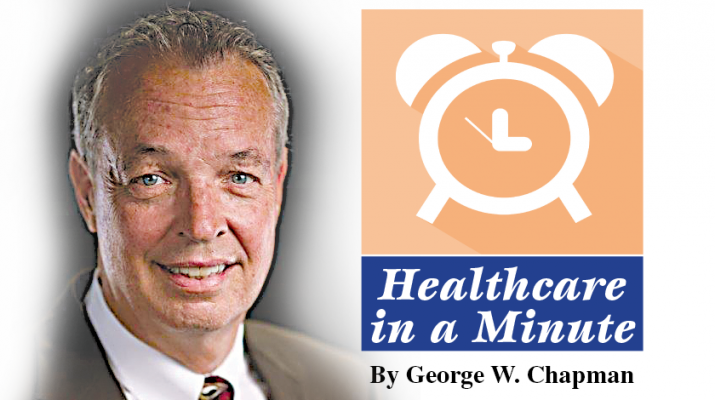By George W. Chapman
There are the bills you receive unexpectedly from “out-of-network” providers. The best example is when you go to your participating “in-network” hospital emergency room only to find that the physicians working in the ER are, unbeknownst to you, out of network. So you must pay the difference between their charge and what your insurance company typically pays for in network physicians. This can also happen with anesthesia bills. The trusting consumer logically believes if their hospital is “in-network,” so would be the physicians who work there. The Harvard Global Institute thinks this is absurd and let a Senate committee know it, arguing it’s unethical if not illegal. It’s asking Congress to do something about it. Way back in 2011, a NYS study revealed patients paid an average $3,800 to out-of-network emergency room physicians. This would not be a problem in the first place if hospital CEOs either refused to do business with out-of-network physicians or at least paid for the difference since the patient is rarely informed in advance.
ACA 2018
Thanks to market uncertainty and the end of the individual mandate to have insurance, enrollment is going down. No one is surprised. A total of 11.8 million people signed up for coverage to begin 2018, but 1.1 million decided not to pay the premium. That left 10.7 million participants as of February 2018. Industry experts believe the number will drop further throughout the year as the current federal administration continues to undermine/sabotage the law, wanting to end the federal exchanges by 2020. Since the feds have yet to come up with a viable alternative for people seeking adequate health insurance coverage, many states will take on the charge.
Big Pharma
Pfizer recently raised the price of 40 drugs, (including cancer pills, blood pressure pills and pain pills), by 9 percent. This is already the second time this year Pfizer has raised prices. Industry experts say this is another example of a drug manufacturer protecting profits from being negatively impacted by potential government intervention and the increasing bargaining power of pharmacy benefit managers that purchase drugs on behalf of huge health plans with millions of members. While PBMs “brag” they negotiated a 25 percent discount, that is only after drug manufactures raised their prices by double digits. No one really knows what the actual price of any drug is anymore. While the White House has basically paid lip service to controlling the exorbitant prices of drugs in the US, the American Association of Insurance Plans (AHIP) is taking matters into its own hands. They have promoted Matt Eyles to be their CEO. Before joining the AHIP three years ago as an analyst, Eyles worked as a lobbyist for the pharmaceutical industry. He now sits on the other side of the fence. He wants to make drug pricing a primary focus as drugs account for almost 30 percent of what an insurance plan pays out in claims. Over the years, out-of-pocket costs for consumers for drugs have increased substantially.
Lobbyists Control Washington…
…and even when it comes to mother’s milk. At the recent convocation of the World Health Assembly in Geneva, Switzerland, US representatives, caving to pressure from baby formula manufacturers, refused to endorse a simple resolution promoting a mother’s natural milk as the healthiest choice for babies. The US threatened to sanction or withdraw military protection from any country that attempted to introduce the resolution.
OB-GYN Shortage
According to a recent study by Doximity, a social network for physicians, the predicted shortage of OB-GYNs has already hit several large metropolitan areas, including Las Vegas, Los Angeles, Miami and Orlando. These cities also tend to have higher-than-average numbers of women in child bearing years. The shortage is being exacerbated by over worked physicians retiring earlier from the delivery component of their practices to focus on more schedule-friendly gynecology. Certified nurse midwives could be a partial solution but physicians and hospitals still typically oppose that solution. CNMs are more prevalent in other countries. Currently, 60 percent of OB-GYNs are women and the percentage of male OB-GYNs drops every year.
Cost of Care in the US.
We outspend every developed country in the world… by far. All agree it costs way too much and something needs to be done before healthcare bankrupts the US. It is now 20 percent of our GDP. With so many vested interests (Big Pharma, insurance companies, hospitals, device manufacturers and even baby formula producers), experts don’t have many solutions. On average, our utilization of healthcare is on par with other developed countries. We just spend two to three times more for services than they do. Ashish Jha, MD, director of the Harvard Global Health Institute, resignedly said, “There is nobody I know that has all the answers, and what we need is a lot more experimentation.” Other countries have shown they can provide similar quality for far less. Until we address lobbying in Congress, real change in our costs will not be brought about by continued “experimentation” which unfortunately ignores the elephant in the room.
Googled health problems.
Here are the most “googled” health problems by selected states. (Draw your own conclusions.) New York: breast cancer. Minnesota: hemorrhoids. Missouri: ADHD. Nebraska: anorexia. South Dakota: insomnia. Utah: Hashimoto’s disease (basically inflamed thyroid). Vermont: opioid addiction. West Virginia: porn addiction. Yes, porn addiction. Connecticut: “quarter” (not mid) life crisis. Iowa: binge drinking. And finally….California, Colorado, Georgia, Illinois, Pennsylvania: syphilis.
George W. Chapman is a healthcare business consultant who works exclusively with physicians, hospitals and healthcare organizations. He operates GW Chapman Consulting based in Syracuse. Email him at gwc@gwchapmanconsulting.com.

